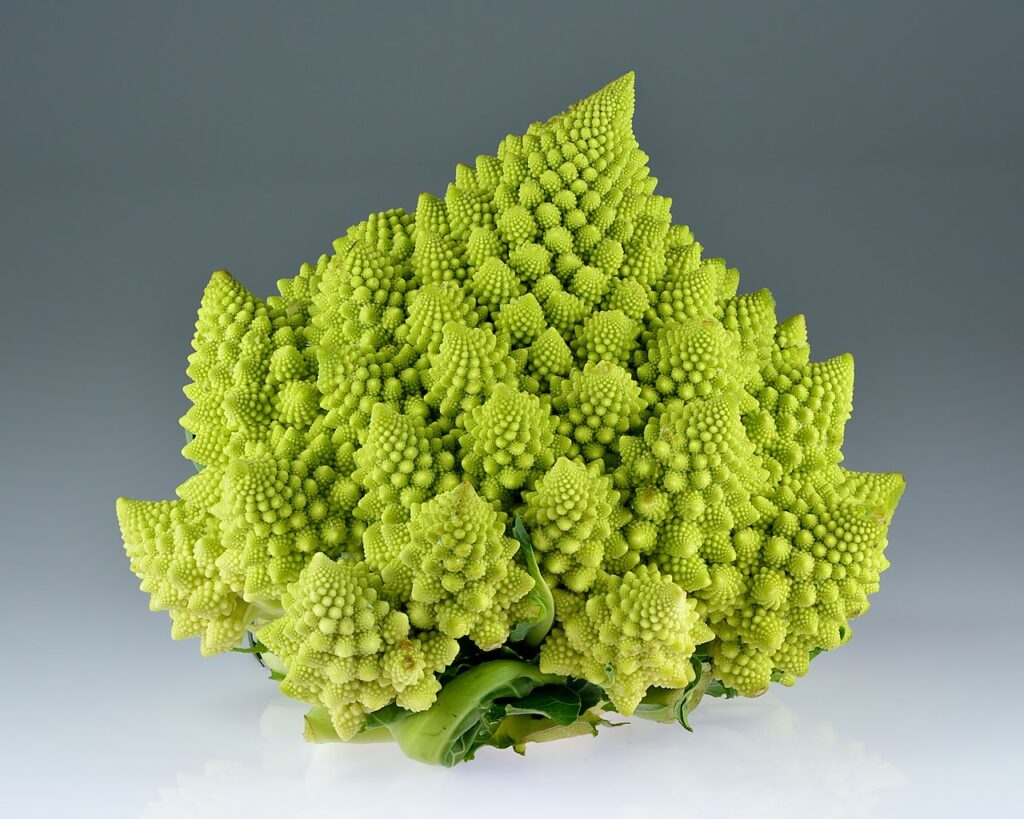Arts therapists, like many artists and other “creatives” argue that creativity, i.e. the emergence of new ideas, things, states of mind and of being, always comes out of or through a phase of chaos. I have a real sympathy with that idea which seems not only to have some truth, if hard to prove, but also to be a corrective to reductionist and mechanistic thinking about our minds, our ways of being in the world, individual and collective.
But that’s not chaos theory! Chaos theory is maths! Oh, and Broccoli.

OK, OK, Romanesco broccoli isn’t actually a member of the broccoli family, is that a failure of self-similarity. Hm, you’re getting off topic Christopher!
Details #
Chaos theory covers a wide collection of mathematical systems sharing the properties that in equation terms they are actually very simple but that they involve recursion or iterative feedback and that at least part of the process is non-linear. If those conditions apply to a system of equations then the state of the system over time is hard to predict, shows extreme sensitivity to starting states and may show “self-similarities” i.e. though never actually repeating over time, it may show near repeating states or patterns.
Chaos theory was developed by Benoit Mandelbrot. He rejected the term “invented” arguing that he discovered, not invented, the area. I recommend the wikipedia article about him.
What has this got to do with therapy and outcome measures? Well therapy is iterative, recursive: it’s a conversation, not always in words, between two or more people (or sometimes two identities in one head in self-therapy) and each next state is informed by earlier ones (hence the iterative, recursive bit) and its processes are clearly often non-linear: we don’t just amplify or diminish the previous state by a fixed ratio or fixed addition or subtraction. That makes it likely that we might see “rough”, “self-similar” patterns in therapy processes. I think we do. Whether that can help us understand the undoubtedly rather “rough” patterns we see in the simplifications of the process in say sessional change measurements is another matter. So far I’m not convinced I’ve seen that.
Try also #
Linear versus non-linear processes/relationships
Chapters #
Not mentioned in the OMbook which was perhaps cowardly of us!
Online resources #
Go search for “fractals”, “Mandelbrot sets” and “chaos”!!
Dates #
First created 16.v.24.
Credits #
Broccoli image created by Ivan Leidus and given Creative Commons Attribution-Share Alike 4.0 International, found via wikipedia here. Many thanks to Ivan Leidus.

